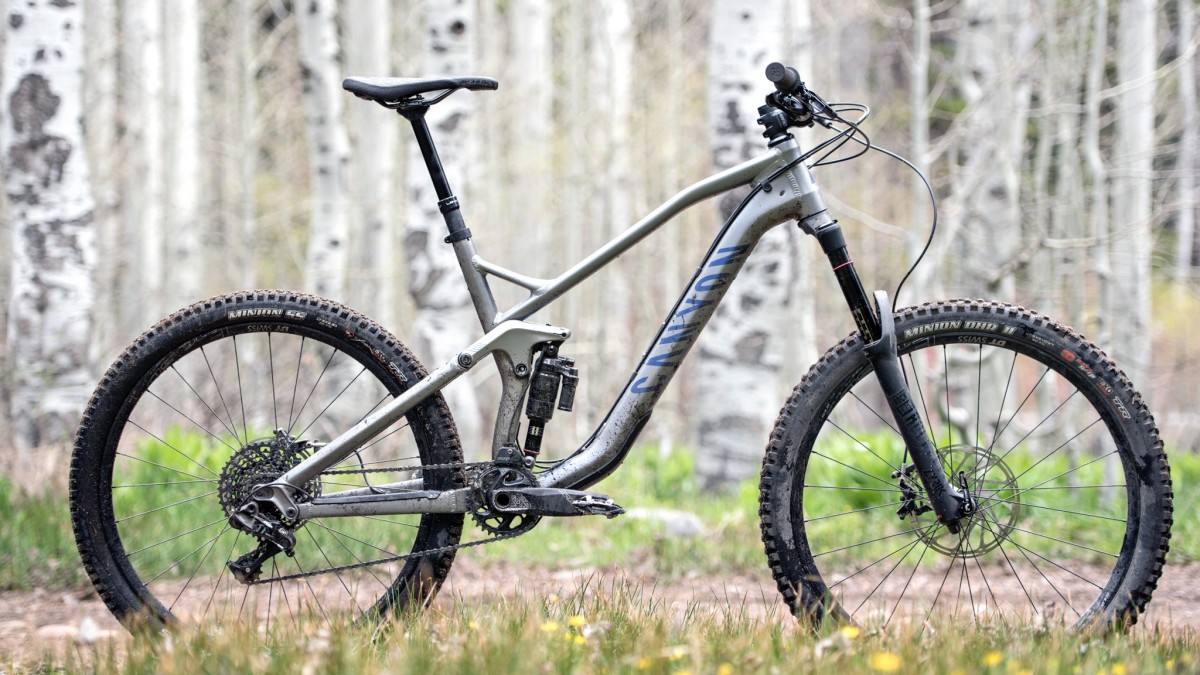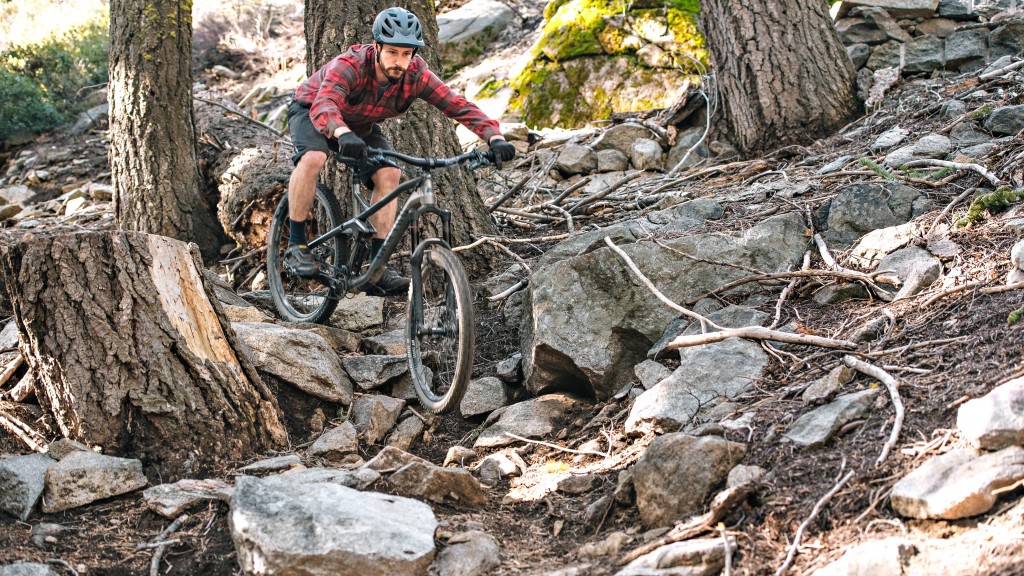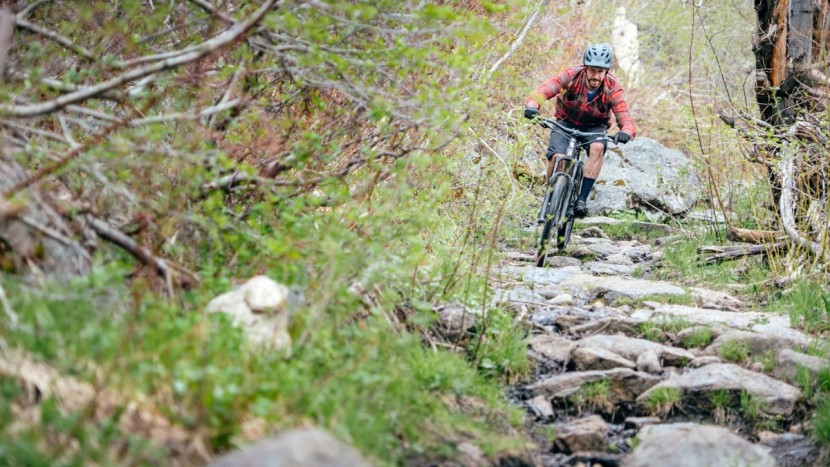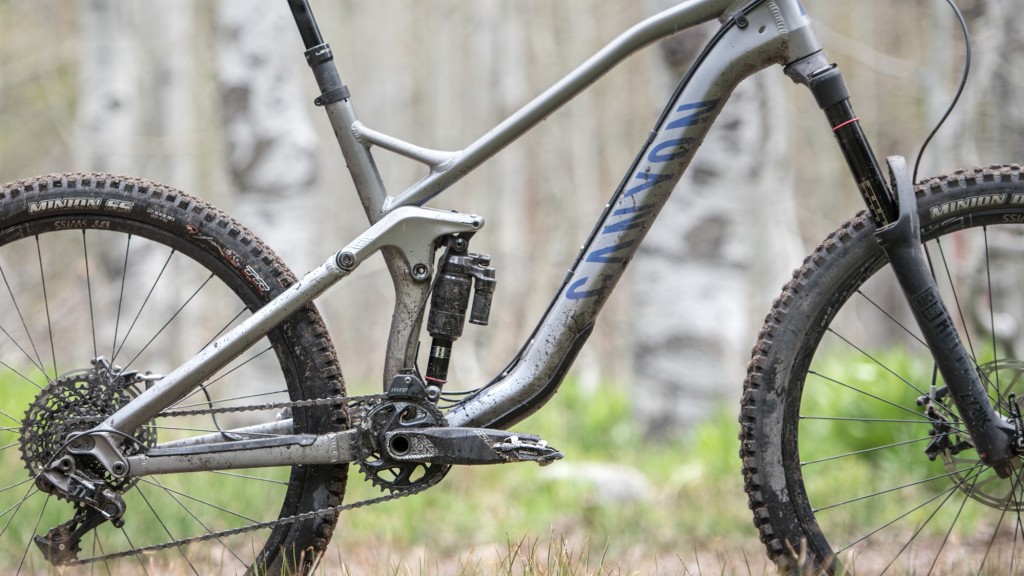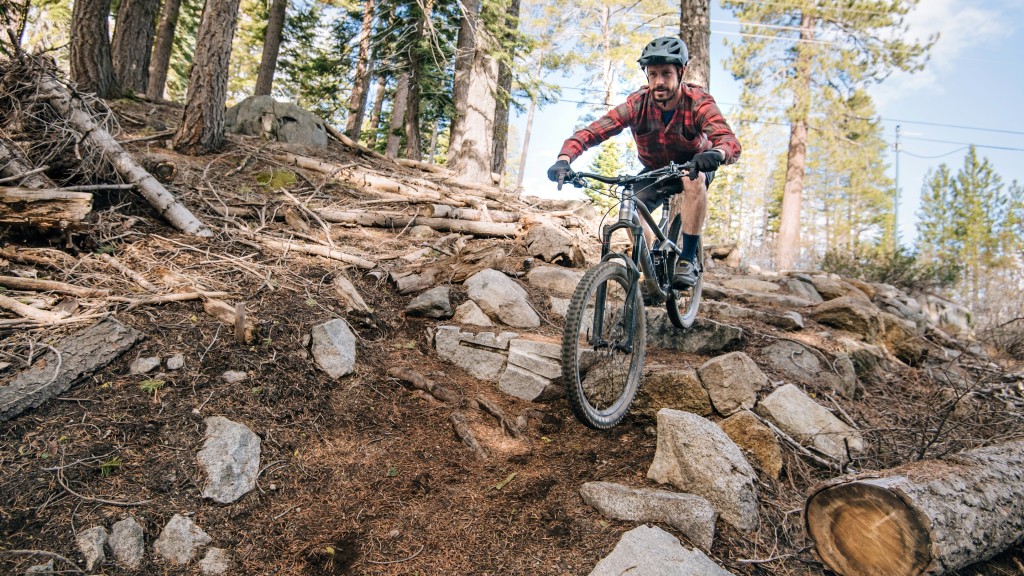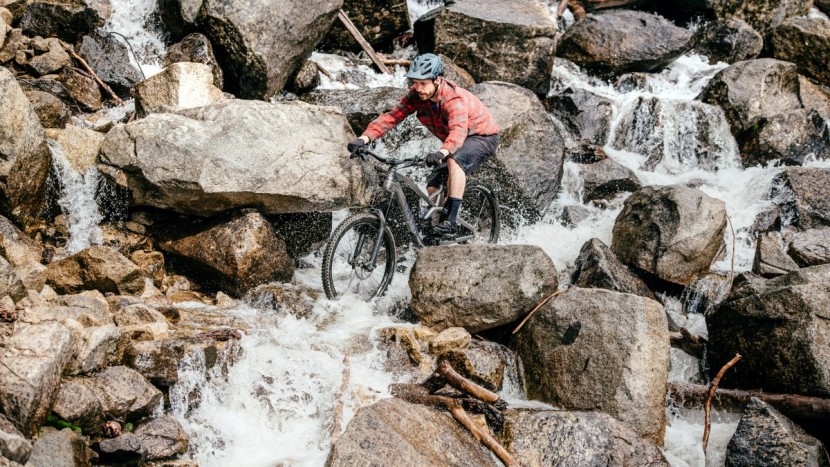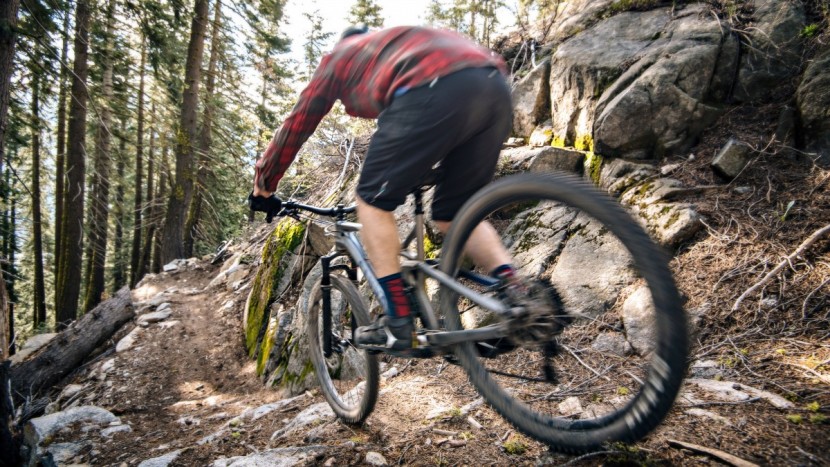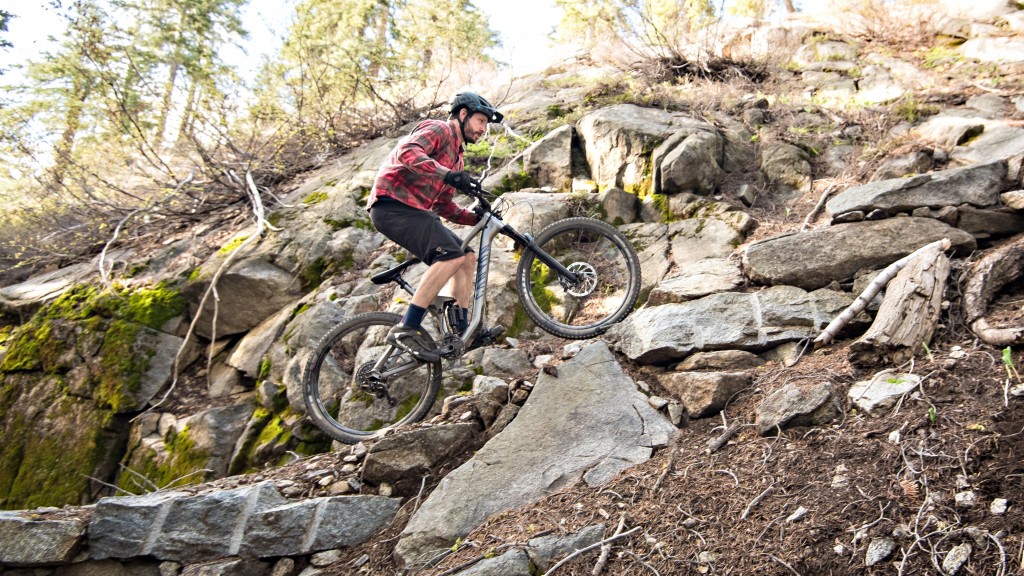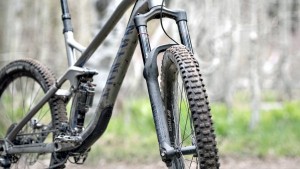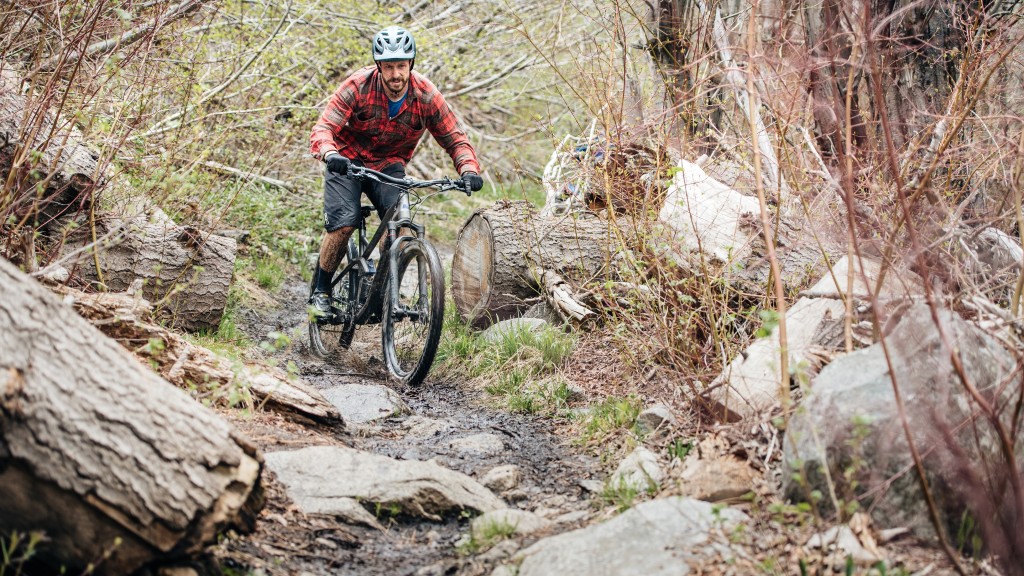Canyon Strive AL 6.0 2018 Review
Our Verdict
Our Analysis
Should I Buy This Bike
The Canyon Strive is a serviceable enduro bike. Riders who are looking to push their limits on steep or gnarly trails should look elsewhere. This bike is comfortable motoring around at a healthy clip but is not the best option for enduro racing or riding big lines. As a result, the Strive is a better choice for the rider who wants a fairly capable bike with stellar uphill abilities. The Shapeshifter technology makes this bike quite the formidable climber. Canyon has not confirmed this, but we expect a redesigned Strive next year.
Not sure you need 160mm of travel? Want to stick to a similar price range? The Canyon Spectral is an outrageously fun trail bike. The Spectral is a balanced, yet fairly aggressive, trail bike. Climbing is predictable and reasonably efficient. Downhill skills are confident on a wide range of trails. Handling is very sharp and precise thanks to its manageable geometry and meaty 2.6-inch Maxxis tires. Despite having less travel, the Spectral is not terribly far off from the Strive's gnar threshold. At $2399, we are confident in saying this bike is by far the best option for riders on a tight budget.
Interested in an enduro bike with 29-inch wheels. The Santa Cruz Hightower LT is a balanced 150mm bike that has impressive climbing and descending skills. The Yeti SB5.5 is another fantastic enduro bike that can serve as a quiver killer. Both of these bikes climb and descend better than the Strive. Whats the catch? This performance doesn't come cheap. The entry-level Hightower LT sells for $3949 and the Yeti SB5.5 starts at a lofty $4999.
The Commencal Meta AM V4.2 rolls on 27.5-inch wheels and carries a similar price tag. The 2018 version of the Meta AM Essential sells for $2999 and is a confident and capable descender on steep and nasty terrain. This bike blends aggressive angles with a 170mm RockShox Lyrik and 160mm of rear wheel travel. The Meta AM feels excellent on burly trails and is very stable at speed. The downside? This bike is a cumbersome climber and can't match the Strive's uphill abilities.
Frame Design
The Strive is designed around 160mm of rear wheel travel and uses a 4-bar linkage system. This design is relatively simple and provides manufacturers with a great amount of design freedom. A variation of this design is used by a large number of manufacturers.
Our large Strive AL 6.0 has a 478mm reach and 629mm effective top tube. It should be noted that our reach measurement is about 10mm longer than Canyon's stated measurement. That is substantial. The chainstays are 422mm long and the wheelbase measures 1215mm.
The Shapeshifter creates two geometry positions. While the measurements don't appear substantially different from one another, the suspension kinematics change too. The two settings are far more unique than the numbers suggest.
In the low setting, this bike has a 347mm bottom bracket height, 66.3-degree head tube angle, and 73.4-degree seat tube angle.
In the high position, this bike has a 354 bottom bracket height, 66.9-degree head tube angle, and 75.2-degree seat tube angle.
Design Highlights
- 27.5-inch wheels only.
- 160mm of travel.
- Comes stock with 170mm fork, originally designed around 160mm fork.
- Shapeshifter technology for on-the-fly geometry adjustment
- Available in one aluminum model (tested) and in carbon fiber with prices starting at $3999.
Downhill Performance
The Strive AL 6.0 provides solid and comfortable downhill performance. This bike is not especially aggressive for an enduro bike, and that is not necessarily a bad thing. It doesn't require mach-speeds or a crazy aggressive pilot to feel responsive. Handling is predictable once you get used to the geometry quirks. The components are largely impressive but the tire choice is questionable.
The Strive can get you down any enduro track or gnarly bike park trail. That said, it lacks the super-aggressive attitude of other enduro bikes we have ridden. With the Santa Cruz Nomad, Evil Insurgent, or Commencal Meta AM, testers were enthusiastic about feeding it down super gnarly, rutted out, fall-line trails. These bikes inspired us to push the speed limits and our comfort zones. We were far more timid with the Strive. It doesn't exude confidence. The geometry, the high front end, and the tire choice dissuade riders from getting too rad. Approaching a steep rock garden or chute brought a small sense of anxiety. The Canyon handled everything we threw at it, but lacked the swagger of other modern enduro bikes.
The front-end of the Strive feels outdated. There are three key factors that create this feeling. First, the head tube angle is slightly steep by today's standards. 66.3-degrees isn't outrageously steep but we are used to slacker bikes in this travel class. Second, this bike has a very tall/high head tube. This puts your hands in an awkward position that is not conducive to getting forward, low, or aggressive in the cockpit. Third, this bike was originally designed around a 160mm fork. This year, these bikes come stock with a 170mm fork which has a longer axle to crown measurement and raises your hands even higher. One tester said that when riding this bike downhill, you need to look under the handlebars to see where you are going. While this might be a slight exaggeration, it paints the picture well.
The steeper and less aggressive geometry can be beneficial for less aggressive riders. The Strive doesn't need to be ridden at 30+mph to be responsive like many enduro bikes. Low-speed handling is sharp and this bike can be fun on the meandering trail ride.
The Strive has a calm and predictable suspension design. While the 4-bar suspension design isn't groundbreaking, it is always effective. Motoring over small bumps, the rear end is calm and quiet. We rode this bike back to back with the YT Capra 29, and there is no denying the Strive had a far more muted and comfortable feel over chatter. The suspension is supple and rear wheel traction is excellent. On bigger impacts, the Canyon feels fairly linear. This means the suspension doesn't ramp up deeper in its stroke. As a result, you can blow through the travel on bigger hits.
The Strive has components that largely worked well on the descent. The 170mm RockShox Lyrik was supportive and plush. The burly 35mm chassis tracks well and isn't easily deflected. The RockShox Monarch Plus R rear shock went beautifully unnoticed. SRAM Guide R brakes are respectable on a bike at this price. The 2.4-inch Maxxis Minion DHR II front tire was a nice choice, but the 2.3-inch Minion SS was questionable. The SS stands for semi-slick. This tire is designed to be fast rolling. The semi-slick design heavily detracts from braking abilities. When hammering on the rear brake, this tire simply doesn't bite well. It is also questionable in sandy or sloppy conditions.
Climbing Performance
The Strive is a stellar climber. Despite its heft, this bike scurries uphill comfortably. The Shapeshifter geometry adjustment system works very well. This bike is a far more comfortable climber than some other bikes in its travel class. The component grouping was a little bit sub-par with stiff gearing and a weak rear tire.
The Shapeshifter technology works very well. There is no doubt the system takes some getting used to. On the left side of the handlebar, there is an additional remote located above the dropper post remote. When you press the lever and bounce your weight forward on the bike, the air pressure in the Shapeshifter mechanism switches the bike into high mode. Early in testing, it was very easy to mistake the dropper lever for the Shapeshifter and vice versa. In addition, we were under the impression that this is something you can do on the fly. In reality, you really need to stop at the bottom of a climb to make the switch between geometry modes.
In high mode, the Strive puts riders in an excellent climbing position. The rider is right on top of the cranks in a fairly upright position that is easy on the back. More importantly, the Shapeshifter alters the suspension kinematics. This means that the suspension reacts differently in high mode. It is much firmer and not as plush. Rider energy is utilized more effectively and power is not lost into a soft and squishy rear end. The RockShox Monarch R doesn't have a climb switch and with the Shapeshifter, it really isn't necessary. Sure, the Shapeshifter mechanism comes with a weight penalty, but it is absolutely worth it.
Uphill handling is impressive. The steeper, 66.9-degree (high position), head tube angle lends itself to responsive handling. The lofty 354mm bottom bracket makes clearing techy sections of trail easy. This bike was pleasant through uphill switchbacks and wasn't cumbersome.
The component grouping was okay on the climb. The 32:42 climbing gear was definitely stiff. We are seeing more and more GX Eagle 1x12 drivetrains or E*Thirteen extended range 46-tooth cassettes. As a result, the Strive's heavy climbing gear was a little disappointing. A 30-tooth chainring would be a nice and inexpensive tweak to this bike. The Minion SS rear tire offers questionable climbing traction. On steep and loose trails this tire breaks away fairly easily under torque. A knobbier rear tire would offer some better bite in those conditions.
Photo Tour
Value
Our Strive AL 6.0 sells for $2599. We think there are better bikes in this price range. The Strive can still be a solid value for the rider who wants an easy-going enduro bike. With fairly impressive components, decent on-trail performance, and the functional Shapeshifter system, we call this an above average value.
Conclusion
The Canyon Strive AL 6.0 has been around since 2015 and its design shows its age. While the geometry may feel outdated, there is no doubt that this is a serviceable enduro bike at an attractive price point. Climbing abilities are impressive and downhill skills are intuitive and predictable. We are excited to see the next iteration of Strive.


